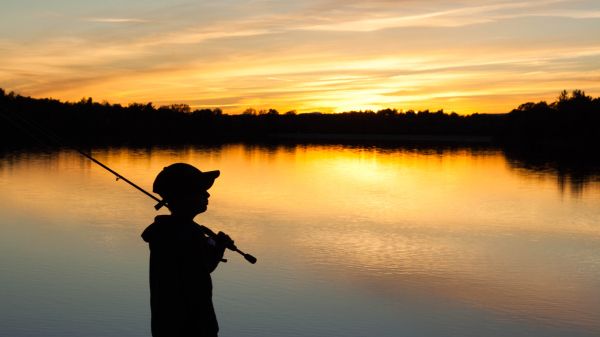Interactive Gazes: A Tool for Environmental Education

Photo Copyright (c) 2017 Lori Lux/Shutterstock. No use without permission.
Interactive Gazes: A Tool for Environmental Education or the Story of Two Boys Learning to Read a River
Child development and education are not just about culminating intellectual information and knowledge. It is also more than their strategies of exploring, manipulating, and experiencing. Hubert Montagner reminds us that development and education are about fostering the development of "cognitive constructions which are paired with emotional, affective, relational and social functions." [1] This idea is key in articulating environmental education with young children.
Cognitive constructions are like groups of information and knowledge associated with impressions and feelings. These impressions and feelings are aligned in our minds to ensure living and survival. They start with "words which are meant to call attention, words that create thoughts in our minds, and thoughts that will generate gestures." [2]
Words are sounds that activate the "interactive gazes." [3]
Interactive gazes open channels to the mind so that observation, identification, and imitation can have a way to deposit information and knowledge. Interactive gazes also "give the power to act on and be acted upon." [4] Ever noticed when people interact with each other, they might speak to communicate, but their eyes may also be communicating, modulating the conversation both ways. Now, this ability occurs between humans, but it can also occur between humans and elements in the environment.
Lately, I have been trying to understand the issues surrounding salmon fishing in the famous Miramichi River in Canada. Through discussions and research, I have learned that the culture of salmon fishing is complex but one wise man whispered that "the Miramichi is a river of knowledge that very few can read anymore. It’s the saddest thing of all." He explained that the river carries the signs of environmental phenomena and the actions of the people living and working along its banks. The river speaks to you about the weather, the seasons, about the sea that flows in and out with the tides. It speaks to you with the breeze and the water, carrying information in the air you breathe, and in the taste, and texture of the water. All his life he has kept his eyes open, his senses on alert, and exchanged "interactive gazes" with the river. The knowledge the river offered him was matched in return with awareness, care, and protection.
Both the river and the wise man have the power to act on and be acted upon.
So, I have been going to the river trying to get a sense of it all. One day I noticed two boys fishing. One was five years old, and his older brother was maybe twelve. They were sitting quietly on a log preparing their fishing rods. The younger sibling set his eyes on his brother, watching him put the bait on the hook, checking the tension of the line, reeling it back, practicing his swing, and then casting his line. The older boy pointed to the pool of water beneath the surface of the river, then put his finger to his mouth, signaling silence. They both stared at the river practicing their "interactive gazes," trying to read the river. The running currents, the dancing waters, the sparkling drops of light on top, the swirling river ponds, the warm rays of sunshine casting light on the river here and there, and the fresh breeze bopping along it were all finding their way into the minds, the body, and the soul of the boys through their "interactive gazes" with the river. The boys were quiet, peaceful, and attentive. They were in tune with each other and the river, learning about space, time, and human nature. They were "acting on and being acted upon." The river was imprinting on them how to be in tune with the environment and how the rhythm of that tuning is part of human nature. I realized then that they were learning how to hang the sign on the door of their lives that says, “Gone fishing!”
The culture of salmon fishing is complex and difficult to grasp these days because salmon fishing is extremely controlled on the Miramichi River. If you catch one, you must let it go back to the river unharmed. Again, the issues related to fishing, and to salmon fishing specifically, are complex and are now written in their own historic path. Museums solely dedicated to salmon fishing have been set up with all manner of artifacts and testimonies about the culture of salmon fishing. They bear witness that the rhythm of humans tuning into nature can be a reality and that the rhythm can be part of human nature. Losing this knowledge that you can read the river would be, indeed, the saddest thing of all.
If you liked this blog or have any questions, please write to me: Suzanne.major@umontreal.ca
SM/sm blog Sept 2023
References
[1] Montagner, H. (2003:57). L’attachement, des liens pour grandir plus libre, L’Harmattan, 207 pages.
[2] Major, S. (2014: 77). Mamès, profèsorn oun kinder likth. Éducation en petite enfance en CPE. Le cas des femmes hassidiques Belz en services de garde en milieu familial accrédités, Thèse de doctorat, Université de Montréal, Département d’anthropologie, 294 pages.
[3] Idem, Major, S. (2014: 56).
[4] Idem, Major, S. (2014: 130).
Join eePRO today and be a part of the conversation!
Comment and connect with fellow professionals in environmental education. Join eePRO >


